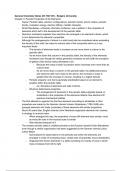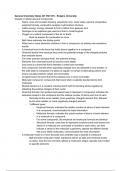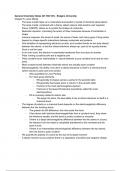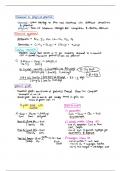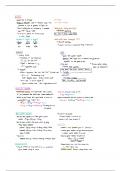General Chemistry 1 (GenChem161)
Rutgers University - New Brunswick/Piscataway
All 8 results
Sort by
General Chemistry Notes on the properties of the periodic table
General Chemistry Notes on the properties and descriptions of molecules and compounds
Lewis Models, General Chemistry
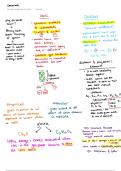
-
General Chemistry I: Compounds and Bonding
- Class notes • 3 pages • 2022
-
nikkim
-
- $7.99
- + learn more
General Chemistry I: Compounds and Bonding - Discusses ionic vs covalent compounds, empirical vs molecular formula, lattice energy, nomenclature with anions and cations, polyatomics, ad naming hydrates.
General Chemistry I: Chemical Reactions - chemical vs physical properties, chemical equations, limiting reactants, percent yield, important reactions.
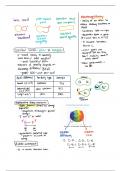
-
General Chemistry I: Chemical Bonding (1 of 2)
- Class notes • 7 pages • 2022
-
nikkim
-
- $9.99
- + learn more
General Chemistry I: Chemical Bonding (1 of 2 documents of subject) - Discusses ionic, polar covalent, and covalent bonds, polar vs non-polar, electronegativity, dipole moments, ionic character, lewis structures, oxyanions, resonance, formal charge, exceptions to the octet rule, average bond energy, average bond length, shape of molecules using valence shell electron pair repulsion (VSEPR), electron group geometry vs molecular geometry, molecular polarity, and water's polarity.
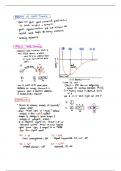
-
General Chemistry I: Chemical Bonding (2 of 2)
- Class notes • 7 pages • 2022
-
nikkim
-
- $8.24
- + learn more
General chem I - chemical bonding (2 of 2 documents for chemical bonding): Discusses Lewis Theory, valence bond theory, hybridization, orbital overlap (pi and sigma bonds), bonding scheme, and orbital energies with diagrams for sp3, sp2, sp, sp3d, and sp3d2.
General chemistry I acids and bases notes: naming, acid-base reactions, gas-evolution reactions, redox reactions, and oxidation numbers.

How did he do that? By selling his study resources on Stuvia. Try it yourself! Discover all about earning on Stuvia

